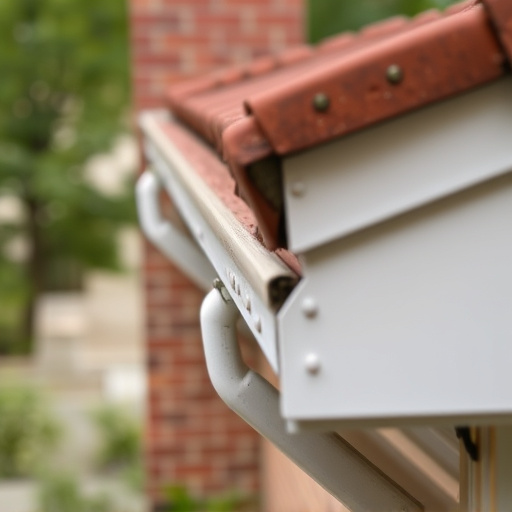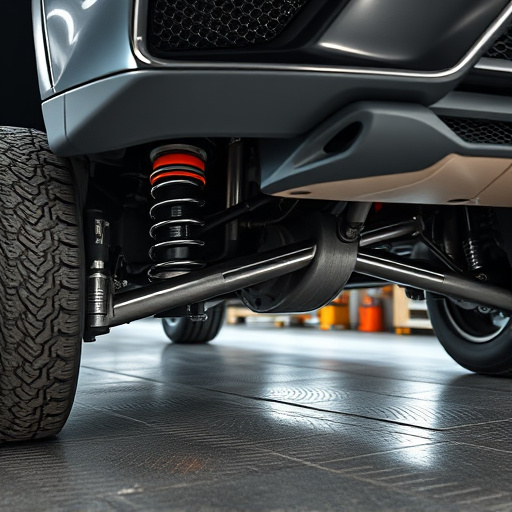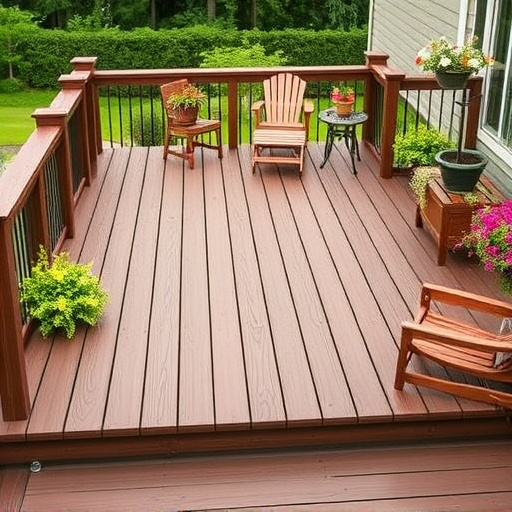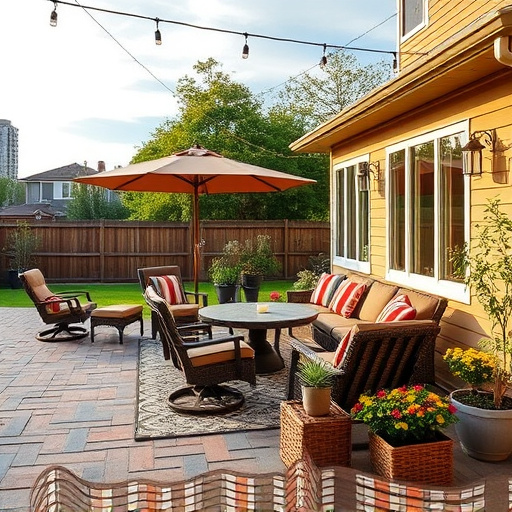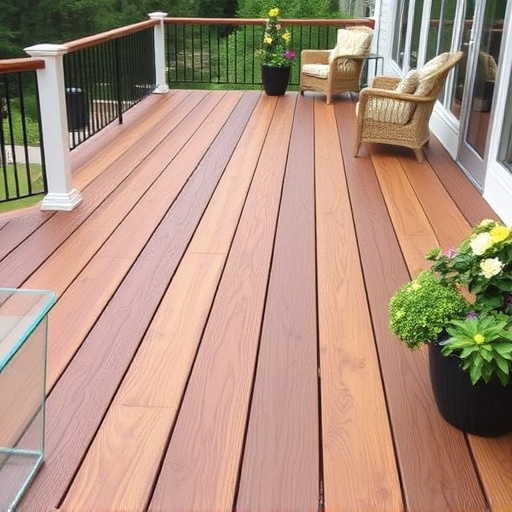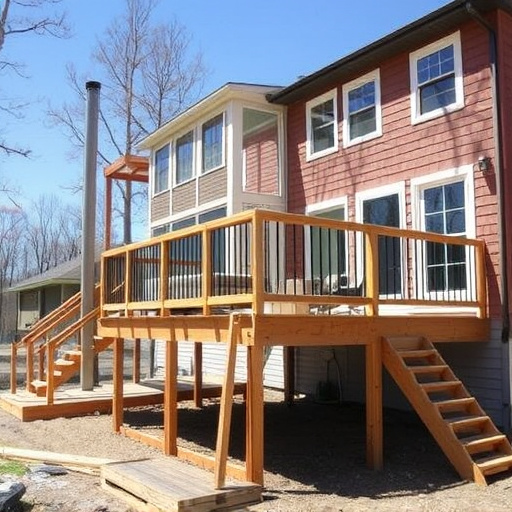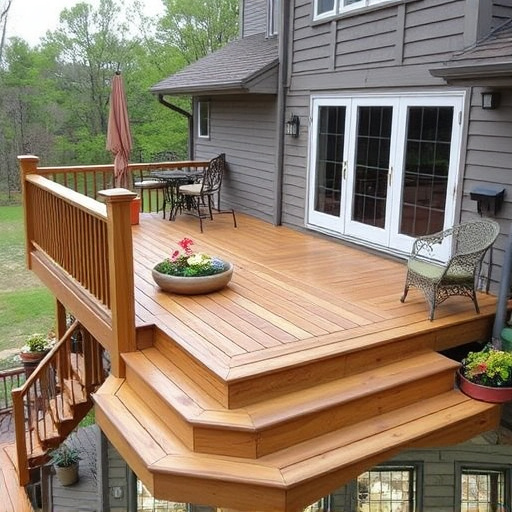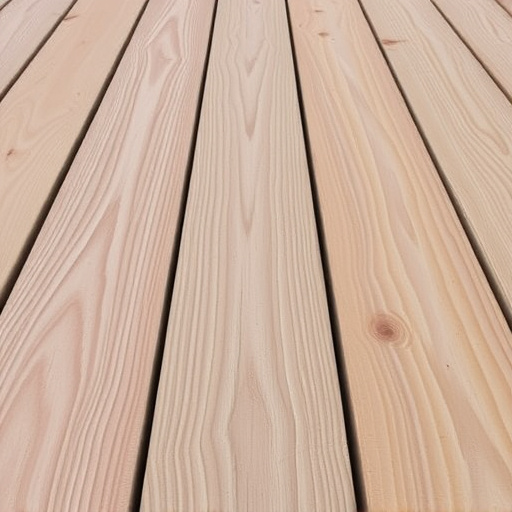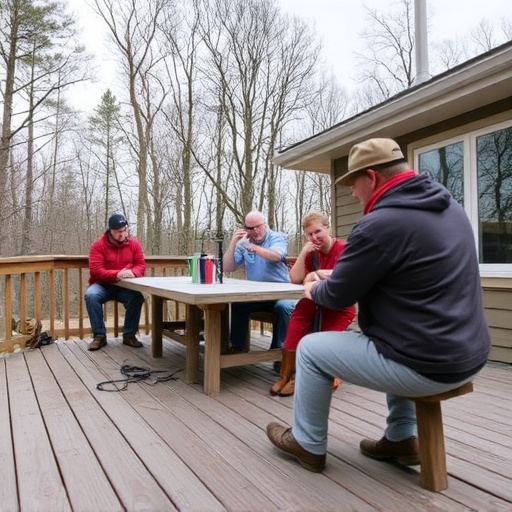Implementing deck stair safety through slip-resistant materials and proper installation enhances outdoor living spaces, ensuring peace of mind for all users. Choose durable options like textured rubber or specialized paint, considering both natural and synthetic compounds. Follow best practices for installation, regular maintenance, and climate-specific considerations to ensure long-lasting safety and aesthetic appeal.
Ensuring safe navigation up and down deck stairs is paramount for any outdoor living space. This guide provides an all-encompassing approach to selecting non-slip surfaces for your deck stairs, catering to both safety and aesthetics. We’ll delve into understanding the critical safety requirements for deck stairs, exploring various non-slip surface materials, and outlining installation best practices to ensure longevity. By following these guidelines, you can create a secure and stylish environment for your outdoor gatherings.
- Understanding Deck Stair Safety Requirements
- Evaluating Non-Slip Surface Materials
- Installation Best Practices for Longevity
Understanding Deck Stair Safety Requirements
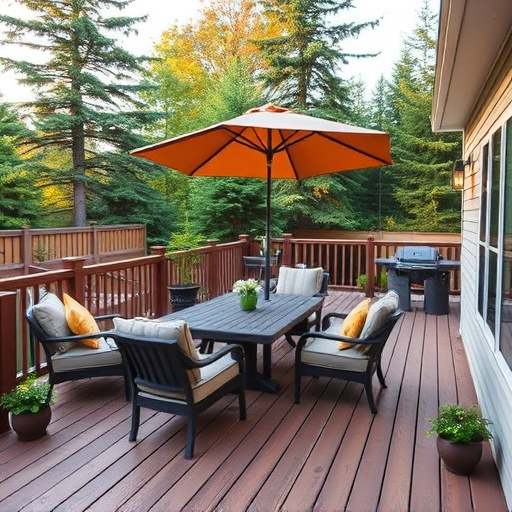
When it comes to deck stair safety, there are specific requirements to ensure a secure and risk-free environment. According to building codes and regulations, deck stairs should be designed with slip-resistant properties to prevent accidents, especially in outdoor settings where moisture and varying weather conditions can affect traction. Understanding these guidelines is paramount for homeowners looking to enhance their deck’s safety.
The key lies in selecting appropriate materials and finishes that offer non-slip surfaces. This involves considering factors such as tread depth, surface texture, and the type of coating or treatment applied. Professional roof consulting experts recommend using durable and slip-resistant options like textured rubber, specialized paint, or composite materials. By adhering to these safety requirements, you can transform your deck stairs into a secure area that allows for seamless navigation while reducing the risk of falls, ensuring peace of mind for all users—from kids playing to older family members enjoying the outdoors.
Evaluating Non-Slip Surface Materials
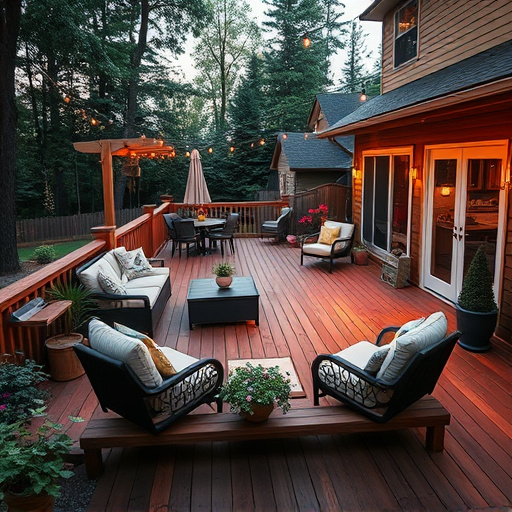
When evaluating non-slip surface materials for deck stairs, it’s crucial to consider both durability and safety. Natural materials like rubber or wood can offer good grip but may require regular maintenance. Synthetic options, such as those made from recycled materials or high-friction compounds, are often more durable and resistant to weathering, making them ideal for both residential and commercial siding applications.
Look for surfaces that have undergone rigorous testing for slip resistance, especially in wet conditions, which is a common concern around deck stairs. Some manufacturers even offer custom solutions tailored for specific environments, ensuring the best traction regardless of foot traffic or weather patterns. Incorporating these non-slip surfaces can significantly enhance safety while maintaining an aesthetically pleasing look, whether for your residential roofing or commercial siding projects.
Installation Best Practices for Longevity
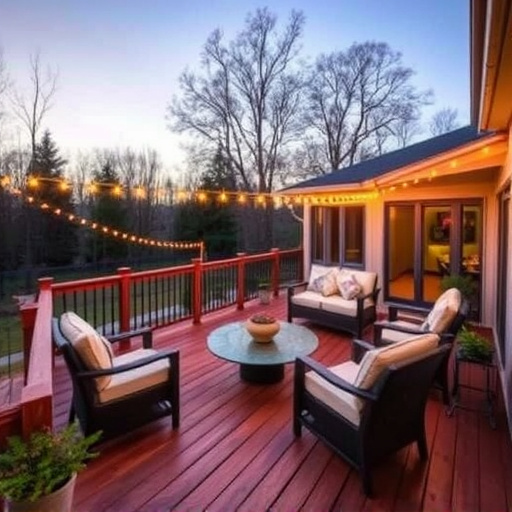
When installing non-slip surfaces on deck stairs, proper best practices are crucial for longevity. Begin by ensuring a clean, level surface to promote maximum adhesion. All gaps and imperfections should be filled, and the area thoroughly swept before applying any coating or material. Using suitable tools and techniques, carefully adhere the chosen non-slip treatment according to the manufacturer’s instructions. This might involve using specialized adhesives or fasteners designed for outdoor, high-traffic areas.
Regular maintenance is another key factor in extending the life of your non-slip deck stairs. This includes periodic cleaning to remove dirt, debris, and stains, as well as reapplication of the non-slip coating when necessary. In harsh climates, consider using materials rated for freeze-thaw cycles and UV resistance. Additionally, integrating these installations with existing roofing and siding services or enlisting professional home service solutions can ensure a seamless, durable finish that complements your deck’s overall aesthetic and structural integrity.
Choosing the right non-slip surface for your deck stairs is a crucial step in ensuring safety and durability. By understanding local building codes, evaluating various materials, and adhering to best installation practices, you can create a secure and long-lasting space. Remember, the right surface selection makes all the difference in preventing accidents and enhancing the overall functionality of your outdoor living areas. For deck stairs, investing in non-slip treatments is an investment in peace of mind.




